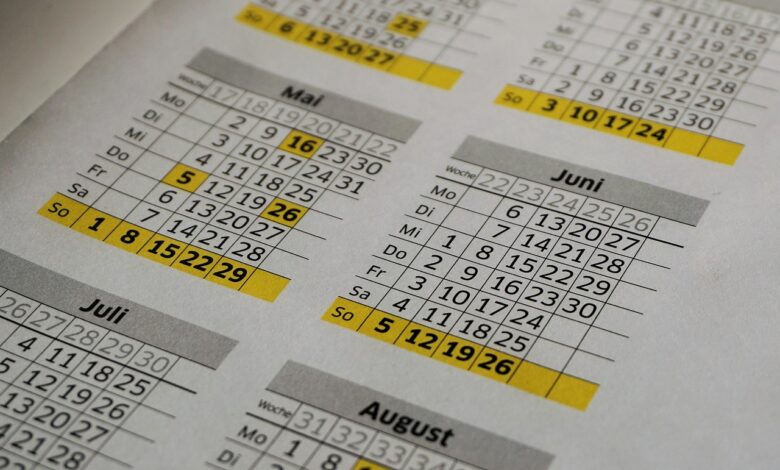How to Create a Weekly Budget in 10 Simple Steps

Monthly budgeting feels overwhelming. I get it. When you’re staring at 30 days worth of expenses, trying to predict every dollar you’ll spend, it’s easy to feel like you’re planning a financial expedition to Mars.
But here’s what changed my entire approach to money management: I discovered weekly budgeting. Instead of wrestling with month-long financial projections, I started planning one week at a time. The results? Incredible.
Within two months of switching to weekly budgets, I had more control over my spending, better savings consistency, and way less financial stress. Instead of wondering where my money went at the end of each month, I knew exactly what happened each week.
Today, I’m sharing the complete weekly budgeting system that transformed my finances and helped hundreds of my coaching clients take control of their money faster than they ever thought possible.
Weekly vs. Monthly Budgeting: Which Is Right for You?
The choice between weekly and monthly budgeting depends entirely on your income schedule and personality type.
You Should Budget Weekly If:
You’re getting paid weekly or bi-weekly: If money comes in every week or two weeks, monthly budgeting creates awkward timing gaps between income and planning.
You struggle with overspending: Weekly budgets create natural spending limits that are harder to ignore than monthly ones.
Monthly planning feels overwhelming: Some people do better with shorter planning horizons and more frequent check-ins.
You want faster feedback: Weekly reviews let you catch problems and make adjustments quickly instead of waiting until month-end.
You have irregular expenses: Weekly planning makes it easier to account for variable costs like groceries, gas, and entertainment.
Monthly Budgeting Works Better When:
You’re paid monthly: If you receive one monthly salary, weekly budgeting can create artificial complications.
Your expenses are mostly fixed: When rent, utilities, and other costs are predictable and unchanging, monthly planning is more efficient.
You prefer big-picture planning: Some people think better in longer time frames and prefer comprehensive monthly reviews.
Your financial situation is complex: Multiple income sources, investments, and business expenses are often easier to manage monthly.
The Psychology of Weekly Budgeting
Shorter feedback loops: You know within days, not weeks, if your spending plan is working.
Reduced planning paralysis: It’s easier to predict one week of expenses than four weeks.
Natural reset points: If you mess up one week, you get a fresh start just days later instead of waiting for next month.
Smaller numbers feel manageable: Budgeting $400 for the week feels less overwhelming than budgeting $1,600 for the month.
10 Simple Steps to Create Your Weekly Budget
Here’s the proven system that works regardless of your income level:
Step 1: Analyze Your Weekly Cash Flow

Before creating any budget, you need to understand your money patterns over a typical week.
Calculate weekly income:
- If paid weekly: Use your actual weekly amount
- If paid bi-weekly: Divide by 2
- If paid monthly: Divide by 4.33 (average weeks per month)
- If paid irregularly: Use your lowest typical week
Track one week of expenses without changing behavior: For seven days, write down every purchase, payment, and expense. This reveals your true weekly spending patterns.
Identify weekly vs. monthly expenses:
- Weekly: Groceries, gas, dining out, entertainment, miscellaneous purchases
- Monthly: Rent/mortgage, insurance, utilities, loan payments, subscriptions
- Quarterly/Annual: Property taxes, insurance premiums, holiday expenses
Calculate your weekly baseline: Divide monthly fixed expenses by 4.33 to get your weekly portion of these costs.
Example calculation:
- Weekly income: $800
- Weekly portion of monthly bills: $500 (rent $400, utilities $50, insurance $50)
- Variable weekly expenses: $200 (groceries $100, gas $50, miscellaneous $50)
- Available for savings/goals: $100
Step 2: Track Every Purchase in Real-Time
Real-time expense tracking is the secret weapon of successful weekly budgeters.
Choose your tracking method:
- Smartphone apps: Mint, YNAB, or EveryDollar
- Simple notebook: Small enough to carry everywhere
- Phone notes app: Always accessible and quick to use
- Receipt collection: Save everything and input daily
Make tracking automatic:
- Set phone reminders to log expenses immediately after purchases
- Use apps that connect to your bank accounts for automatic categorization
- Take photos of receipts immediately to input details later
- Set up alerts for debit card transactions
The psychology of real-time tracking: When you have to write down every purchase, you naturally become more conscious about spending decisions. This awareness alone reduces impulsive purchases by 15-20%.
Tracking categories for weekly budgets:
- Groceries and household items
- Transportation (gas, parking, public transit)
- Dining out and coffee
- Entertainment and recreation
- Personal care and clothing
- Miscellaneous purchases
Step 3: Create Meaningful Spending Categories

Effective categories make weekly budgeting simple and actionable.
Essential categories (non-negotiable):
- Housing portion: Weekly allocation for rent/mortgage and utilities
- Food: Groceries for home cooking
- Transportation: Gas, parking, maintenance fund
- Insurance portion: Weekly allocation for all insurance premiums
- Debt payments: Minimum payments plus extra if possible
Important categories (valuable but adjustable):
- Dining out: Restaurants, coffee shops, takeout
- Entertainment: Movies, events, subscriptions
- Personal care: Haircuts, toiletries, clothing
- Healthcare: Prescriptions, copays, health expenses
Goal categories (future-focused):
- Emergency fund: Building 3-6 months of expenses
- Specific savings: Vacation, car replacement, home improvement
- Extra debt payments: Accelerated payoff for high-interest debt
- Investment contributions: Retirement accounts, taxable investments
Category optimization tips:
- Start with 6-8 categories maximum to avoid overcomplification
- Combine similar expenses (all insurance together, all entertainment together)
- Create subcategories only if you consistently overspend in broad categories
- Adjust category amounts based on actual spending patterns after 2-3 weeks
Step 4: Set Clear Weekly Financial Goals
Goals transform budgets from restrictive checklists into exciting progress trackers.
Types of weekly goals:
Spending goals: “Stay under $150 for groceries and dining out combined” Saving goals: “Transfer $75 to emergency fund every Friday” Debt goals: “Make $50 extra payment toward credit card” Habit goals: “Cook at home 5 out of 7 days this week”
SMART goal framework for weekly budgets:
- Specific: “Save $50 this week” not “save more money”
- Measurable: Dollar amounts and specific actions
- Achievable: Based on your actual income and expenses
- Relevant: Connected to your larger financial priorities
- Time-bound: Accomplished within the seven-day period
Goal tracking methods:
- Visual progress bars in budgeting apps
- Simple checkboxes on written budgets
- Shared tracking with accountability partners
- Photo documentation of progress milestones
Motivation strategies:
- Celebrate small weekly wins (staying under budget, meeting savings goals)
- Link weekly goals to larger monthly and annual objectives
- Share progress with supportive friends or family members
- Create small rewards for consistent goal achievement
Step 5: Identify Strategic Expense Reductions
Weekly budgeting makes it easier to spot and eliminate unnecessary spending.
The weekly expense audit: Review each spending category and ask: “What can I reduce without significantly impacting my life quality?”
Common weekly expense cuts:
Food optimization:
- Meal planning reduces grocery costs by 15-25%
- Cooking at home saves $8-15 per meal compared to restaurants
- Batch cooking on weekends saves time and money
- Shopping sales and using coupons strategically
Transportation efficiency:
- Combining errands into single trips saves gas and time
- Walking or biking for nearby destinations
- Carpooling or public transportation when practical
- Maintaining vehicles properly prevents expensive repairs
Entertainment alternatives:
- Free community events instead of paid entertainment
- Home movie nights instead of theaters
- Potluck gatherings instead of restaurant meals
- Library resources for books, movies, and activities
Subscription optimization:
- Cancel services used less than once per week
- Share family plans with relatives when possible
- Use free alternatives for premium services you rarely use
- Set calendar reminders to review subscriptions monthly
The 80/20 rule for expense reduction: Focus on the 20% of expenses that consume 80% of your discretionary spending. Usually this means food, transportation, and entertainment.
Step 6: Build Your Weekly Budget Framework
Now comes the exciting part: creating your actual weekly spending plan.
Simple weekly budget template:
Income: $800 (your weekly take-home amount)
Fixed expenses (weekly portions):
- Housing: $350 (rent + utilities)
- Insurance: $50 (health, auto, renters)
- Debt minimums: $75
- Subtotal fixed: $475
Variable expenses:
- Groceries: $80
- Gas/transportation: $40
- Dining out: $50
- Entertainment: $30
- Personal care: $25
- Subtotal variable: $225
Goals:
- Emergency fund: $50
- Extra debt payment: $25
- Fun/miscellaneous: $25
- Subtotal goals: $100
Total allocated: $800 (Income – Expenses = $0)
Budget creation tools:
- YNAB: Excellent for zero-based weekly budgeting
- EveryDollar: Dave Ramsey’s approach adapted for weekly use
- Google Sheets: Free and customizable templates
- Simple notebook: Old-school but effective for weekly planning
Automation integration:
- Set up weekly automatic transfers for savings goals
- Schedule debt payments for the same day each week
- Use banking alerts to track spending against weekly limits
Step 7: Prioritize Weekly Savings Goals
Consistent weekly savings create more wealth than sporadic monthly contributions.
Weekly savings psychology: It’s easier to consistently save $50 per week than to save $200-250 monthly. Weekly habits feel more manageable and create faster momentum.
Savings prioritization order:
- Emergency starter fund: $25-50 weekly until you reach $1,000
- Employer 401(k) match: Maximize free money before other goals
- High-interest debt elimination: Extra payments toward credit cards or loans above 7% interest
- Full emergency fund: Continue building to 3-6 months of expenses
- Specific goals: Vacation, car, home improvement, etc.
- Long-term investments: Retirement accounts and taxable investments
Weekly savings strategies:
- Pay yourself first: Transfer savings money immediately when income arrives
- Round-up programs: Apps like Acorns automatically invest spare change
- Automatic increases: Raise savings amounts by $5-10 weekly every month
- Windfall allocation: Put unexpected money (tips, rebates, gifts) directly into savings
Savings account optimization:
- Use high-yield savings accounts like Ally or Marcus for emergency funds
- Consider separate accounts for different goals to track progress visually
- Set up automatic transfers to happen on the same day each week
Step 8: Build in Flexibility and Self-Compassion
Rigid budgets break under real-world pressure. Smart budgets include flexibility from the start.
The buffer fund approach: Include a small “miscellaneous” category (5-10% of income) for unexpected expenses or budget overages.
Adjustment strategies:
- If you overspend in one category, immediately reduce spending in another category for the remainder of the week
- Move money between categories as needed, but never exceed total weekly income
- Use the next week as a reset opportunity rather than abandoning the system
Learning mindset over perfection mindset:
- Treat budget overages as data collection rather than failure
- Adjust future budgets based on actual spending patterns
- Focus on improvement trends rather than perfect execution
Flexibility examples:
- Budget $80 for groceries, but if you need $90, reduce dining out from $50 to $40
- Include a $30 “unexpected” category for small emergencies or opportunities
- Plan for irregular weeks (holidays, special events, medical appointments)
Self-compassion practices:
- Remember that budgeting is a skill that improves with practice
- Celebrate small wins like staying under budget in any category
- View mistakes as learning opportunities rather than personal failures
- Start fresh each week rather than carrying guilt from previous weeks
Step 9: Develop Weekly Budget Discipline
Sticking to your budget is where the real financial transformation happens.
Environmental strategies (make good choices easier):
- Remove spending apps from your phone’s home screen
- Unsubscribe from promotional emails that trigger impulse purchases
- Use cash for discretionary categories to create natural spending limits
- Shop with specific lists and predetermined spending amounts
Psychological strategies (strengthen your budget mindset):
- Review your financial goals before making large purchases
- Use the 24-hour rule for any unplanned spending over $25
- Find free or low-cost alternatives to expensive entertainment
- Connect with others who share similar financial values
Accountability systems:
- Share weekly goals with trusted friends or family members
- Use budgeting apps that send progress alerts and reminders
- Schedule weekly budget check-ins with your partner or accountability buddy
- Join online communities focused on budgeting and financial improvement
Habit formation techniques:
- Link budget tracking to existing habits (coffee, lunch, bedtime routine)
- Start with tiny, manageable changes rather than dramatic lifestyle overhauls
- Use visual reminders (phone wallpapers, sticky notes) for budget goals
- Track consistency rather than perfection (aim for 80% adherence)
Dealing with budget temptations:
- Create specific responses to common spending triggers
- Identify emotional spending patterns and develop alternative coping strategies
- Keep visual reminders of your financial goals in your wallet or phone
- Calculate the opportunity cost of purchases (“This $50 could be $25 toward my vacation fund”)
Step 10: Review and Optimize Weekly

Weekly reviews are what separate successful budgeters from people who give up after a few weeks.
Sunday planning ritual (15-20 minutes):
- Review previous week’s spending against budget
- Identify what worked well and what needs adjustment
- Plan upcoming week’s budget based on known expenses and goals
- Set specific spending intentions for high-risk categories
Weekly review questions:
- Did I stay within my total weekly budget?
- Which categories went over or under budget?
- What unexpected expenses occurred, and how can I plan for similar situations?
- What spending brought genuine value, and what did I regret?
- How did my spending align with my stated financial priorities?
Optimization strategies:
- Adjust category amounts based on actual spending patterns
- Identify recurring problem areas and create specific strategies to address them
- Look for new opportunities to reduce expenses without reducing life satisfaction
- Increase savings goals gradually as you become more efficient with spending
Progress tracking methods:
- Net worth calculation: Track monthly to see overall financial progress
- Goal completion rates: Measure how often you hit weekly savings and spending targets
- Spending efficiency: Calculate cost per value unit for different expense categories
- Habit consistency: Track how often you follow your budgeting and review routines
Monthly consolidation:
- Roll weekly data into monthly reports for larger pattern analysis
- Assess progress toward longer-term financial goals
- Make strategic adjustments to your overall financial plan
- Celebrate consistency and progress achieved through weekly budgeting
Benefits of Weekly Budgeting
Understanding these advantages helps maintain motivation during challenging weeks:
Enhanced Spending Control
Research backing: Studies show that people who budget weekly spend 12-18% less on discretionary expenses compared to monthly budgeters.
Why it works: Weekly limits feel more immediate and concrete than monthly ones. It’s easier to visualize spending $100 over seven days than $400 over 30 days.
Real-world example: Client Sarah reduced her dining out expenses from $280 monthly to $180 monthly simply by switching to a $45 weekly restaurant budget. The shorter timeframe made limits feel more real and achievable.
Reduced Financial Overwhelm
Cognitive load reduction: Planning one week feels manageable; planning one month can feel overwhelming, especially for people new to budgeting.
Faster problem identification: Issues become apparent within days rather than weeks, allowing for quick corrections before problems compound.
Immediate feedback: You know quickly whether your budget is realistic and sustainable, rather than discovering problems at month-end.
Accelerated Debt Payoff
Weekly momentum: Making debt payments every week creates psychological momentum that monthly payments don’t provide.
Payment frequency advantage: More frequent payments reduce average daily balances on interest-bearing debt, saving money on finance charges.
Habit reinforcement: Weekly debt payments become routine faster than monthly payments, making consistency easier to maintain.
Improved Savings Consistency
Psychological research: People are more consistent with small, frequent actions than large, infrequent ones. Weekly savings contributions feel more manageable than monthly lump sums.
Compound frequency: While the mathematical difference is small, weekly savings contributions create more frequent positive reinforcement for the savings habit.
Weekly Budgeting Success Tips
These strategies accelerate your success with weekly budgeting:
1. Start with Realistic Expectations
Begin conservatively: Your first weekly budget should be slightly easier to achieve than you think you need. Success breeds success, and early wins build confidence.
Allow learning time: Expect 3-4 weeks of adjustments before your weekly budget feels natural and accurate.
Focus on systems over outcomes: Measure success by consistency of budgeting habits rather than perfect spending accuracy.
2. Prioritize High-Impact Categories
Identify your spending triggers: Most people have 1-2 categories where they consistently overspend. Focus budget discipline on these areas first.
Apply the 80/20 rule: Usually, 20% of your spending categories account for 80% of your budget variances. Master these categories first.
Start with easiest wins: Begin with categories that are easiest to control, then gradually work on more challenging areas.
3. Set Weekly Mini-Goals

Micro-objectives: In addition to spending limits, create positive goals like “cook dinner at home 5 nights this week” or “bring lunch to work 4 days.”
Progress celebration: Acknowledge weekly wins, even small ones. This positive reinforcement strengthens budgeting habits.
Connection to bigger picture: Link weekly goals to monthly and annual financial objectives to maintain long-term motivation.
4. Find Your Accountability System
Partner coordination: If you’re married or partnered, make weekly budgeting a team activity with shared goals and regular check-ins.
Friend accountability: Share weekly goals with trusted friends who support your financial improvement.
Community support: Join online communities or local groups focused on budgeting and financial wellness.
Professional guidance: Consider working with a financial counselor or coach if weekly budgeting feels overwhelming initially.
5. Leverage Technology Wisely
App selection: Choose budgeting apps that support weekly planning and provide real-time spending feedback.
Automation balance: Automate savings and fixed payments, but maintain manual awareness of variable spending categories.
Alert systems: Set up spending alerts and budget notifications, but don’t rely solely on technology for budget discipline.
Advanced Weekly Budgeting Strategies
Once you’ve mastered basic weekly budgeting, these advanced techniques can optimize your system:
Variable Income Weekly Budgeting
For irregular earners: Use your lowest typical weekly income as the baseline. Treat higher-income weeks as opportunities for accelerated savings and debt payments.
Seasonal workers: Create different weekly budgets for high-income and low-income seasons, with transition plans between periods.
Commission-based income: Budget conservatively based on guaranteed income, then allocate commission income using predetermined percentages for savings, debt, and lifestyle.
Weekly Envelope System
Digital envelopes: Use apps or separate checking accounts to create weekly spending envelopes for each budget category.
Physical cash system: Withdraw weekly amounts for variable expenses like groceries, gas, and entertainment. When the envelope is empty, spending stops.
Hybrid approach: Use cash for problem spending categories while maintaining digital tracking for fixed expenses and savings.
Weekly Investment Strategy
Dollar-cost averaging: Make weekly investment contributions to smooth out market volatility and build consistent habits.
Goal-based investing: Allocate weekly amounts to different investment accounts based on time horizons (emergency fund, retirement, medium-term goals).
Tax optimization: Use weekly contributions to maximize tax-advantaged account contributions throughout the year.
Common Weekly Budgeting Mistakes
Avoid these pitfalls to accelerate your success:
Over-Categorization
The mistake: Creating too many detailed categories that require extensive tracking and management. The solution: Start with 6-8 broad categories and add detail only where you consistently have problems.
Perfectionism Paralysis
The mistake: Abandoning weekly budgeting after overspending in one category during one week. The solution: Treat weekly budgets as experiments and learning opportunities rather than pass-fail tests.
Ignoring Monthly Obligations
The mistake: Focusing only on weekly variable expenses while neglecting to save for monthly bills. The solution: Always include weekly portions of monthly expenses in your weekly budget calculations.
Unrealistic Timeline Expectations
The mistake: Expecting weekly budgeting to feel natural and easy within the first week or two. The solution: Give yourself at least a month to adjust to weekly budgeting rhythms and find your optimal system.
Final Thoughts
Weekly budgeting isn’t just a different timeframe for the same old budgeting advice. It’s a fundamentally different approach that can transform your relationship with money through more frequent feedback, better spending awareness, and faster course corrections.
The beauty of weekly budgeting lies in its simplicity and immediacy. Instead of wondering what went wrong at the end of the month, you know every week whether your financial plan is working. Instead of making massive adjustments once monthly, you make small tweaks weekly that keep you on track.
Remember, the best budgeting system is the one you’ll actually use consistently. If monthly budgets have been overwhelming or ineffective for you, weekly budgeting might be the game-changer that finally makes financial planning feel manageable and sustainable.
Start with one week. Make it simple, make it realistic, and make it yours. Before you know it, you’ll have developed the money management skills that create lasting financial security.






